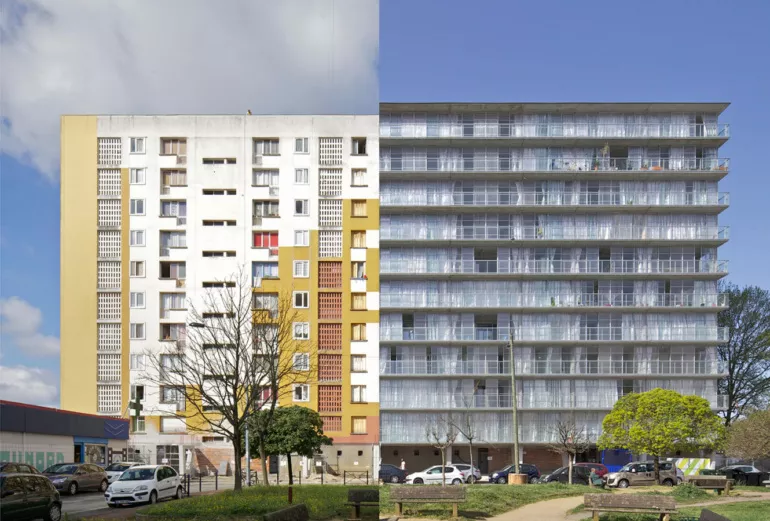News & Trends
Building sustainably or building as little as possible from scratch?

The industry and construction sectors are responsible for 31% of global greenhouse gas emissions. The production of cement, the main ingredient in concrete, is particularly significant. It accounts for 9% of global CO2 emissions. To reduce emissions in construction, creative solutions are needed, from recyclable new buildings to the use of lower-emitting materials and the transformation and repurposing of old buildings.
«It’s about buildings that can be broken down into individual parts. It’s about concrete elements from the 3D printer, recycled concrete, building with wood – the list is very long»
Martin Neukom, Director of construction in Zurich
What is it about
During the use phase – for example, while a building is inhabited – new buildings usually have a lower greenhouse gas footprint than old buildings. However, this does not mean that building from scratch is more sustainable.
First, renovating an old building also leads to low-emission living while preserving cultural assets. Second, for residential buildings, grey energy accounts for about 20% of the energy consumption of the entire life cycle of a building. Grey energy is used for the construction of a building, that is, for the production and transport of building materials and for the energy used during construction. If a building is now demolished before the end of its ‘natural’ life cycle, this proportion becomes larger (the earlier the demolition, the bigger). The invested grey energy is lost with the demolition. Third, demolition generates huge amounts of waste. In Switzerland, this amounts to 80–90 million tonnes, which is 84% of the Swiss waste volume. Some of this can be recycled, but recycling usually leads to a devaluation of the material, and recycling processes also involve grey energy.
‘Reduce, reuse, recycle’: we know this principle for PET bottles, but the same applies to housing. ‘Recycle’ comes only third, preceded by ‘reduce’ (taking up less living space) and ‘reuse’ (reusing old buildings).
Why this is important
In many Swiss cities such as Zurich, there has been a housing shortage for years, especially in affordable housing. In addition, through the 2013 revision of the Spatial Planning Act, the population clearly spoke out against urban sprawl in Switzerland: already zoned building land should be used, and municipalities should densify inward. In this sense, densification is usually given as an excuse for demolition. However, it is worth examining: if small, inexpensive apartments are replaced by newly built spacious living spaces, the number of square meters is increased, but no more living space is created. Moreover, densification is also possible without a wrecking ball: old buildings can be converted, expanded and adapted to new needs. In this way, recycling becomes a stopgap rather than the main solution. Anne Lacaton and Jean-Philipp Vassal, winners of the 2021 Pritzker Architecture Prize, for example, are pursuing a ‘never demolish’ strategy, from which they gained notoriety in France by converting neglected buildings.
At the same time, it is important to remember that to solve global challenges such as access to clean water, sanitation, and affordable housing, in many parts of the world the needed infrastructure has yet to be built. As cement and concrete will play an important role in this, it is essential that this industry be decarbonised. To this end, the Global Cement and Concrete Association has created a Net Zero Roadmap to decarbonise by 2050 and, in a first initiative, is supporting India, Thailand, Egypt and Colombia in their progress to reduce emissions.
The Globalance View
The megatrend of resource scarcity inevitably leads to the topic of circular economy. To protect the environment and enable future economic growth, available resources must be used in the best possible way. The longer they remain in the cycle, the better. This requires new markets for used building materials and new technologies to process these materials. Innovations for energy- and resource-conserving construction focusing on future recyclability are also essential. The potential for a company to secure a pioneering role for itself today is significant.
Would you like to discover inspiring stories from entrepreneurs and projects in the field of sustainable construction and resource management? Dive into our Futuremover magazine, where we regularly present exciting players and innovations.
Image Credit: Transformed building by Lacaton & Vassal in the Grand Parc, Bordeaux (Photo © Philippe Ruault).



